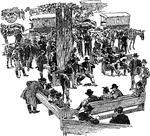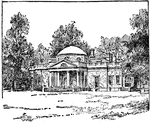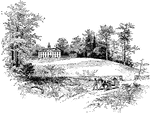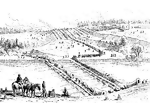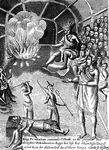The Places in Virginia ClipArt gallery offers 220 views of the commonwealth, particularly events of the Civil and Revolutionary Wars.

Battle of Mechanicsville
The Battle of Beaver Dam Creek, also known as the Battle of Mechanicsville or Ellerson's Mill took place…

Discovery of a Confederate Battery at Messech's Point
The activity of the Confederates on the Potomac and the confluent rivers was almost incredible. In one…

Tomb of Monroe
The tomb of the fifth President of the United States, James Monroe. His grave is at Hollywood Cemetery…

Monticello
"Monticello, Governor Jefferson's place of retirement. This venerated mansion is yet standing, though…
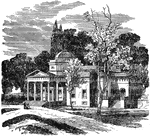
Monticello, Jefferson's Estate
Monticello was Thomas Jefferson's estate in Charlottesville, Virginia. It was built in 1809 and appeared…
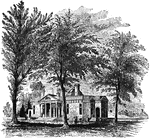
Monticello, Jefferson's Home
Monticello, located near Charlottesville, Virginia, was the estate of Thomas Jefferson, the principal…

Montpelier, Madison's Estate
Montpelier was James Madison's estate in Orange, Virginia. It was built in 1724.
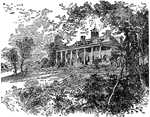
Mount Vernon
An illustration of Mount Vernon which is located near what is now Alexandria, Virginia. Mt. Vernon was…
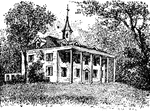
Mount Vernon
Mount Vernon, the home and burial place of George Washington, situated in Fairfax county, Virginia,…
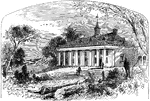
Mount Vernon
Mount Vernon, located near Alexandria, Virginia, was the plantation home of the first President of the…

Mount Vernon in Washington's Day
Mount Vernon, located near Alexandria, Virginia, was the plantation home of the first President of the…
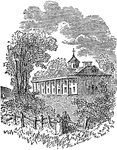
Mt. Vernon
Mount Vernon, located near Alexandria, Virginia, was the plantation home of the first President of the…
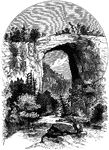
The Natural Bridge in Virginia
Natural Bridge in Rockbridge County, Virginia is a geological formation in which Cedar Creek has carved…

Natural Bridge, Virginia
Natural Bridge in Rockbridge County, Virginia is a geological formation in which Cedar Creek (a small…

Nelson Tombs
"The Nelson Tombs. This view is from the burial-ground looking down the York River toward Chesapeake…
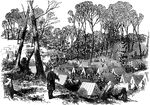
Camp of Ninth Massachusetts
"Camp of the Ninth Massachusetts Regiment in the woods, one mile from the Confederate fortifications,…
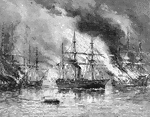
Norfolk Navy Yard Burning
The Norfolk Naval Yard, also known as the Norfolk Naval Shipyard became an integral shipyard during…
Occupation of Norfolk
"Occupation of Norfolk, VA., by the Federal troops- view of the city- Federal vessels at anchor." —Leslie,…
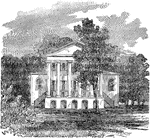
Oak Hill Plantation, Monroe's Estate
Oak Hill Plantation was James Monroe's estate in Loudoun County, Virginia. It was built for the fifth…

Officer's Tents
"New Jersey Camp at Arling, Va., designated as Camp Princeton in honor of one of the Revolutionary battle…

Fort Pawhatan
"The campaign on the James River- General Butler landing at Fort Pawhatan."— Frank Leslie, 1896
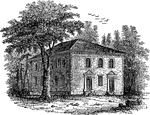
Pohick Church
Pohick was the first permanent church in the colony to be established north of the Occoquan River, sometime…
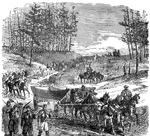
Pontoon Bridge
"The Pontoon bridge 'On The March'- the pontoon wagons on their way from Aquia Creek to the Rappahannock.…

Army of the Potomac
"Advance of the Army of the Potomac. Occupation of Winchester, VA., and the abandoned Confederate Fortifications,…

Battle at Potomac
"Engagement between the Federal troops and the Confederates on the Virginia side of the Potomac, opposite…
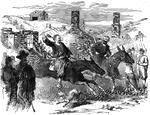
Passage of the Potomac
"A street in Harper's Ferry, VA., during the passage of the Potomac by the Federal troops from Maryland,…

Recrossing the Potomac
"General Banks's Division recrossing the Potomac from Williamsport, Md., to attack the Confederate army…

Camp Princeton
"New Jersey Camp at Arling, Va., designated as Camp Princeton in honor of one of the Revolutionary battle…

Raleigh Tavern
"Raleigh Tavern. When I visited Williamsburg in December, 1848, the front part of the old Raleigh tavern…

Rappahannock River
American soldiers retreating across the Rappahannock river in Northwest Virginia. It shows an example…
Recrossing the Rappahannock
"The war in Virginia. General Meade recrossing the Rappahannock, October, 1863, before Lee's advance.…

Lincoln Review
In 1863, president Lincoln reviewed some sixty thousand troops in the small town of Falmouth VA. Although…
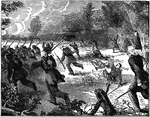
Battle of Rich Mountain
The Battle of Rich Mountain took place on July 11, 1861, in Randolph County, Virginia as part of the…

Richmond State Capitol
This illustration shows the capital building for the state of Virginia. It can be found in the city…

Devastation in Richmond
The devastation in Richmond Virginia following the campaign against Richmond.
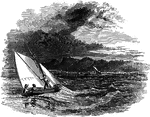
Roanoke Island
Roanoke Island was the site of the 16th century Roanoke Colony, the first English colony in the New…
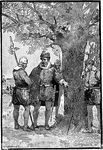
Croatan Carved into Tree at Roanoke
John White finds the only clue to the disappearance of the "Lost Colony" of Roanoke: a tree carved with…

Roemer's Battery
"The war in Virginia- Roemer's Battery, Third Division, Ninth Army Corps, shelling Petersburg. Our readers…

Engagement at Romney
"Engagement at Romney, VA., twenty miles from New Creek, Tuesday, June 11th, 1861- the Eleventh Indiana…

Sarcophagus of Washington
"The sarcophagus of Washington. This was placed in the family vault in the autumn of 1837."—Lossing,…
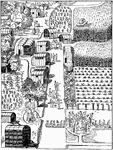
The Towne of Secota
"Picture of an Indian village drawn by John White in 1585 and incorporated in a report to Sir Walter…

Sheridan's Great Battle
"The war in Virginia- Sheridan's Great Battle with J. E. B. Stuart at Yellow Tavern, May 11th, 1864-…

Signal Station
"Federal signal station on Loudoun Heights, Harper's Ferry, communicating with the station on Maryland…
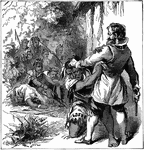
Smith Subduing Powhatan
The meeting between Capt. John Smith, founder of the Virginia colony, and Powhatan, the chief of the…

Smith's Escape from Slavery
Captain Sir John Smith (c. January 1580–June 21, 1631) Admiral of New England was an English soldier,…
